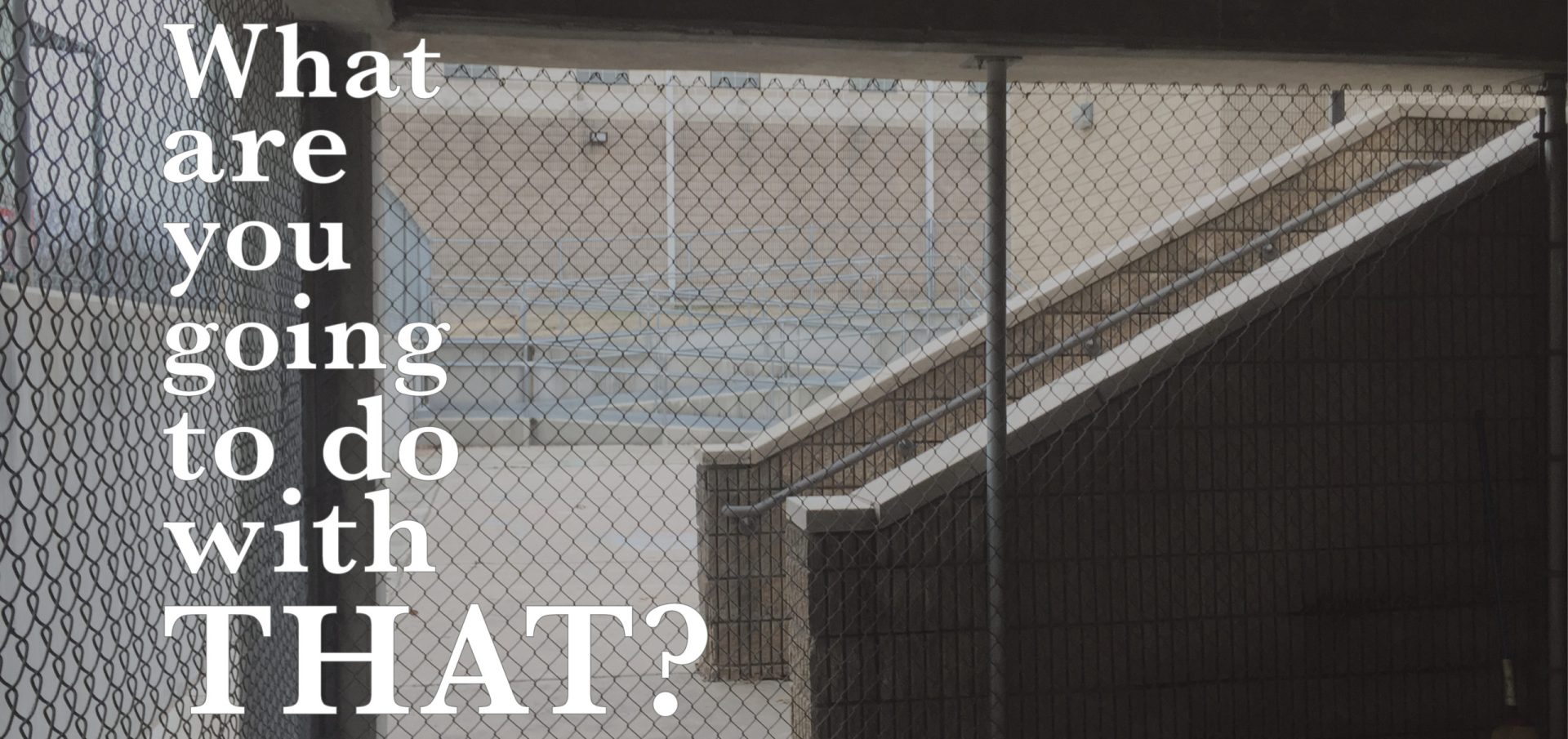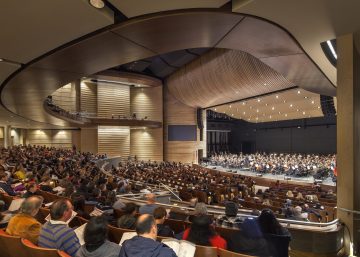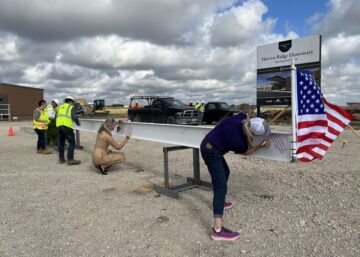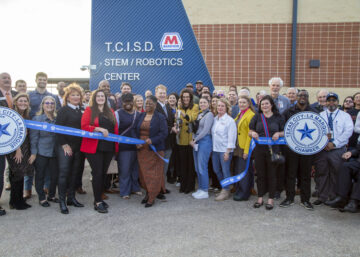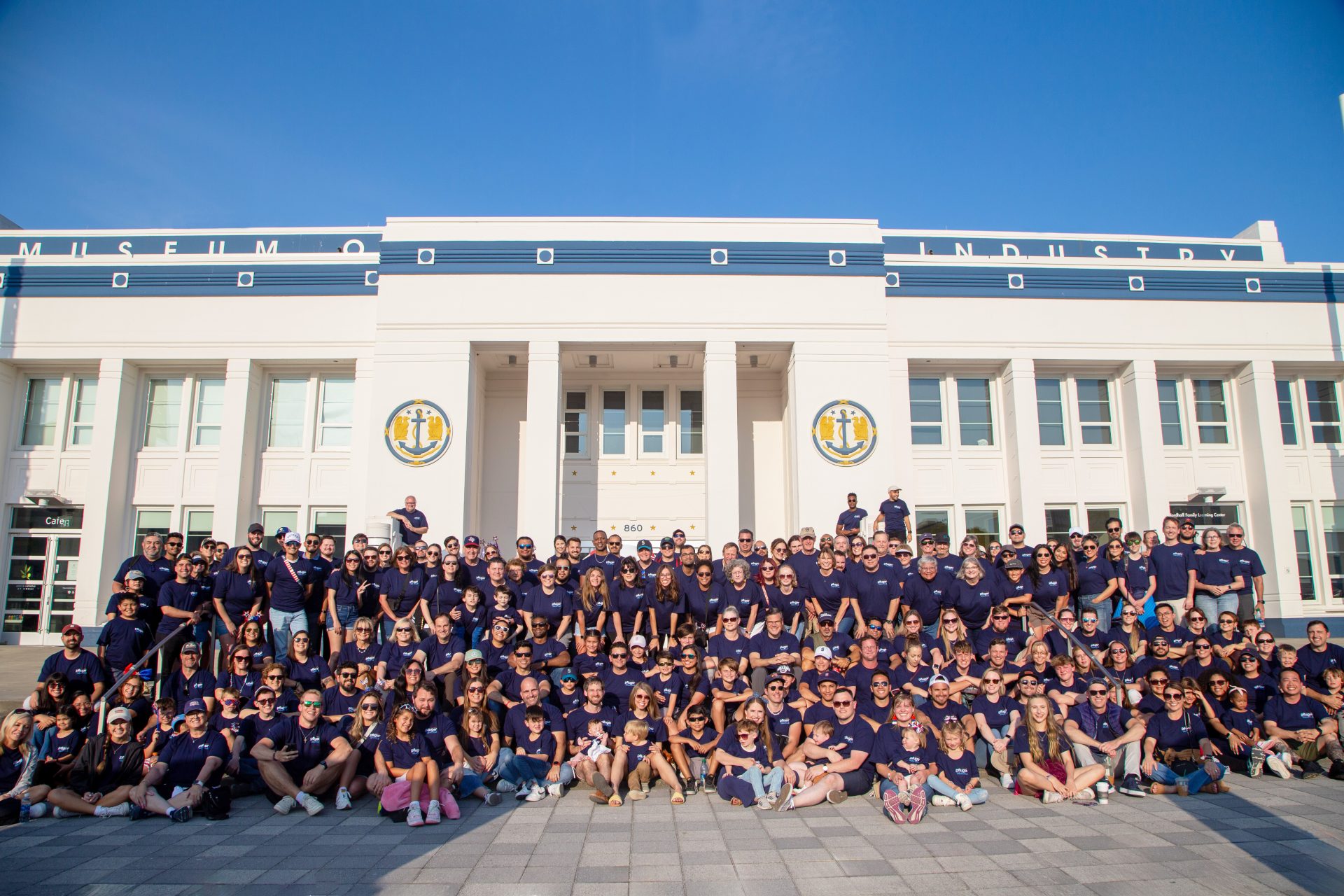Meaningful learning can take place in many places. Sure, students learn in a classroom. However, they can also learn from interactions on the playground, conversations in the cafeteria, or listening from the backseat of the car.
Jessica Molter, Managing Principal of Pfluger’s Austin office, can add to that list with two reimagined spaces she designed for Round Rock ISD. These two elementary designs prove that with creativity and forethought, overlooked spaces can be transformed into academic learning environments that positively impact educational outcomes.
ENRICHMENT & THE ENVIRONMENT
Not all classrooms have four walls at Laurel Mountain Elementary School. So, in 2018, Trevor Hance, then the district’s outdoor learning specialist, approached Molter with a request— turn a concrete pad from a former homestead into an outdoor learning center that could be a hub for the school’s outdoor learning curriculum. She jumped at the opportunity, and the Nature to Neighborhood Studio was born.
A hybrid of nature and structure, the N2N Studio sits on a bluff between the campus and the Travis County Balcones Canyonlands Preserve.
The minimalistic materials and openings spark curiosity from outside while disappearing from within. Woven rebar mimics overlapping branches and twigs in a practical yet whimsical solution to securing the space. Birds and small animals perch there to give students a close-up view of nature. The N2N Studio, student-designed gardens, natural environments, and playscapes collectively support student learning.
The 1,094 SF space can convert from an intimate indoor setting to an expansive communal space by opening overhead doors on four sides. And its location on the bluff allows for natural ventilation, while the inverted butterfly roof supports an 8kW solar array and battery storage system.
The plan included a 3,700-gallon cistern that stores rainwater for two ponds and a stream table. The stream table, a gift from a neighborhood family, helps teachers interactively teach students about erosion and sedimentation.
Though renewable, the systems in this 100% off-grid space are limited to battery and cistern capacities, so students also learn conservation.
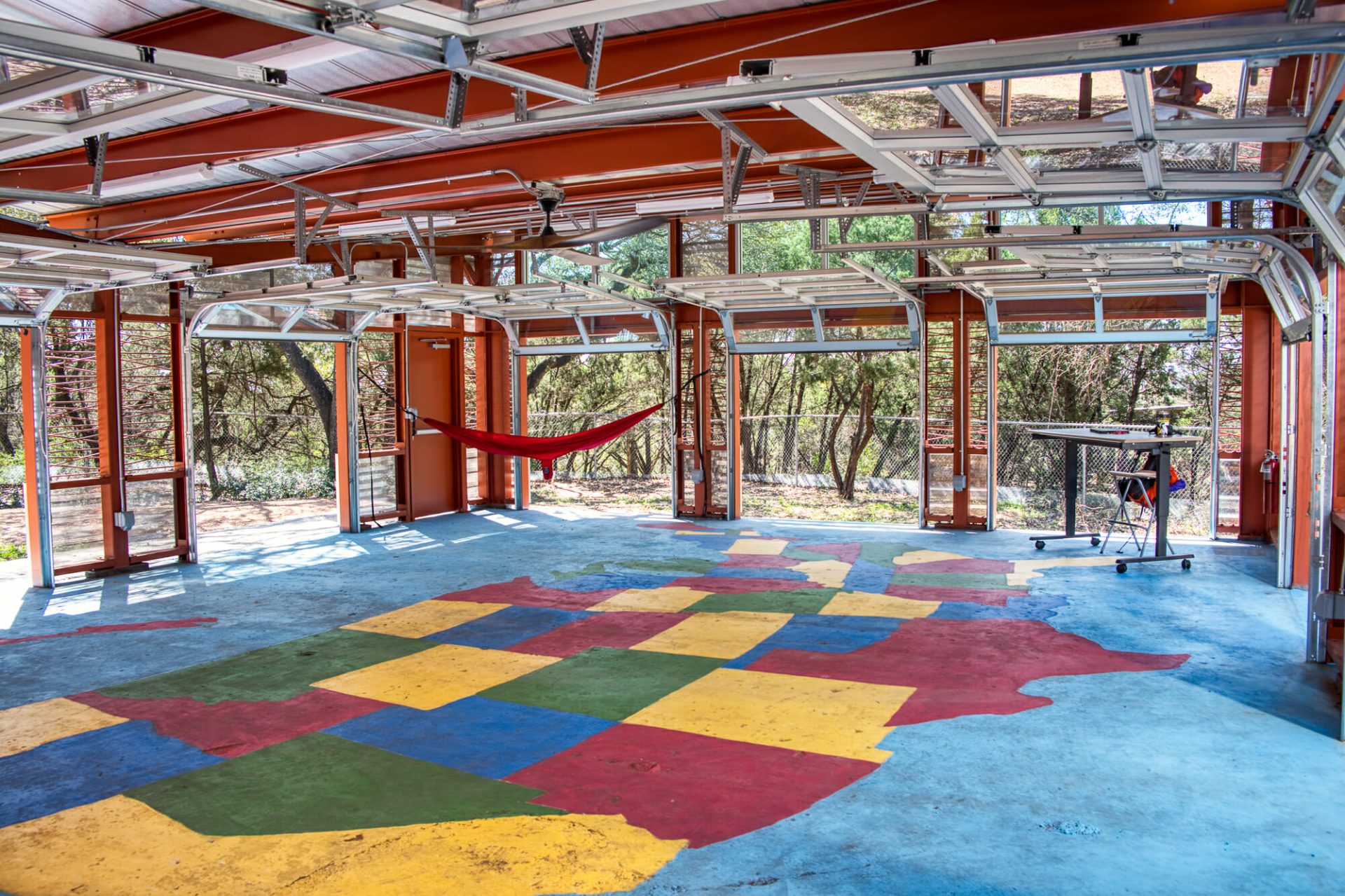
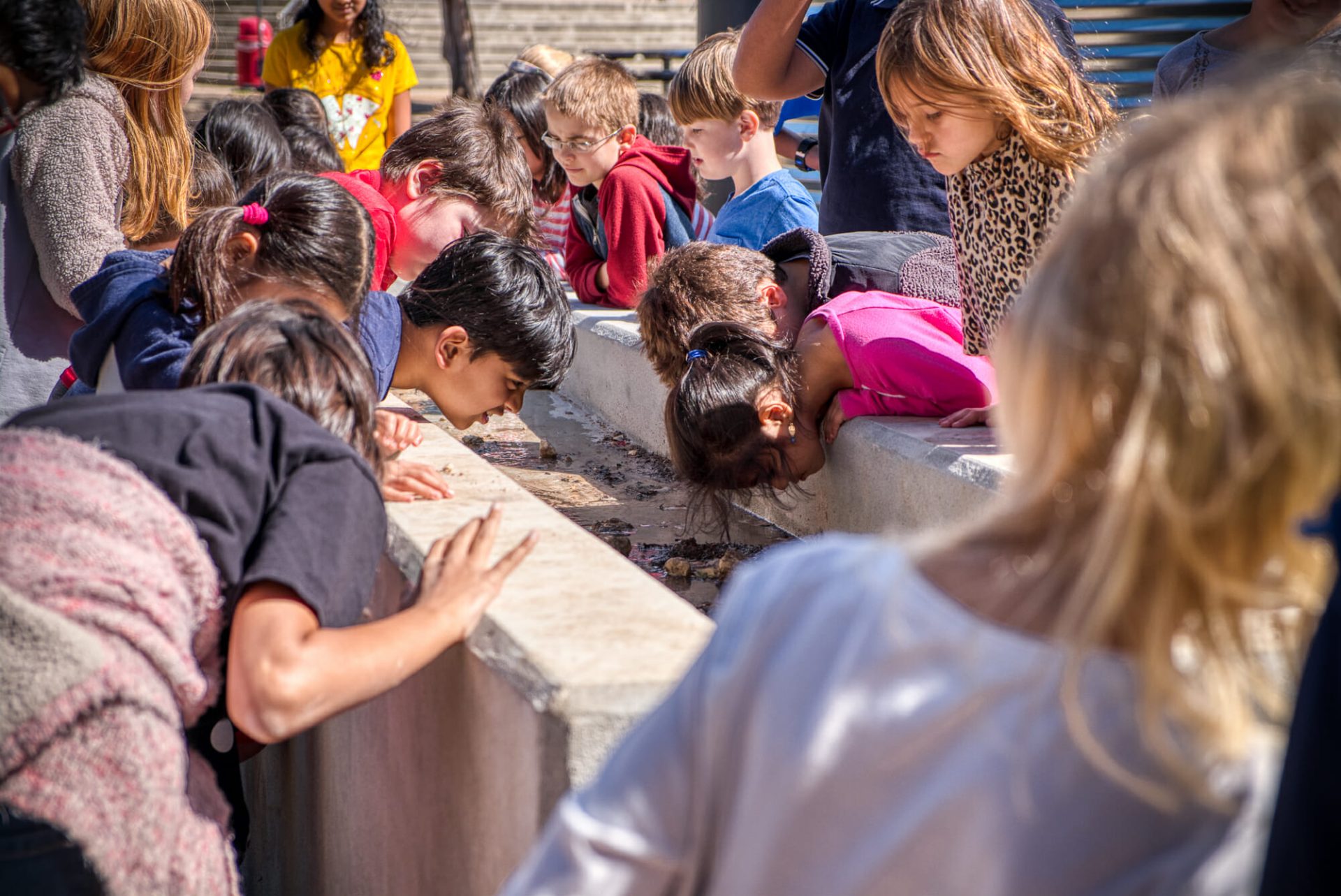
How does one measure the value of The N2N Studio and the supported outdoor learning environments?
Faculty Surveys—In a 2019 faculty survey, teachers said they were happier and believed their teaching had improved.
Community Involvement—Funding was obtained from multiple public and private entities. Students used their writing skills to help craft grant requests. In addition, the students experienced the gift of service when a former student recreated his Eagle Scout project on the original slab.
Sustainability— The N2N Studio sets an interactive example of conservation and stewardship.
Hands-on learning—the gift of a stream table lets children get messy while learning about erosion and sedimentation. And the outdoor space serves as a sort of” home base” for many of the campus’s classes like photography, social studies, art, music, and more.
Its innovative use of space as a creative teaching platform earned The Nature to Neighborhood Studio a 2019 Caudill Award from TASA/TASB and a 2019 More With Less Award from the Association for Learning Environments.
INCORPORATING LITERACY & INCLUSIVITY
Deep Woods Elementary School is home to Wunderland, an inclusive, activity-based learning environment at a neighborhood elementary school that serves three district special ed programs and has a campus-wide focus on literacy.
Like the neighborhood surrounding it, the campus has some age on it—and for older campuses, space is always a premium. So, when space lacks purpose, it is up to the designer to find opportunities for innovation. And in this case, innovative thinking activated a hidden treasure under a suspended slab.
The transformed space creates an inclusive, activity-based, open-air learning environment. Equipment designed for multisensory learning enhances social, emotional, and academic discovery for children of all ages and abilities— exercising their bodies, imagination, emotions, and intellect through physical and educational play.
IT ALL STARTED ON A WALK.
Within days of being named Principal, Reba Mussey was walking the campus with the district’s chief of schools and innovation when he pointed to a vacuous, locked, underground cavern, ” What are you going to do with that?” He joked.
Challenge accepted.
Mussey began to dream, then enlisted faculty to help her dream bigger. Creative and invested educators dreamed of a place for personalized learning opportunities that met the diverse needs of the school’s student body. A teacher drew out a foundational concept which was passed on to the design team. Armed with that initial concept and a wish list from the teachers, the design team began to bring ideas to life.
First, using the sketch, they planned educational/ activity zones. Each zone would be inclusive, accessible, and provide interactive learning and educational play opportunities for all the student groups.
The team didn’t force a design but let the space dictate how it could be used. A block wall would become a rock face—a fence became a forest. Open areas accommodate creative learning through non-specific, non-directed, imaginative play that encourages teamwork, decision-making, conflict resolution, and role-playing. All are necessary skills for open-ended educational and social development.
Each activity space is designed for gross and fine motor skill development to complement and supplement curriculum. All vertical and horizontal planes were evaluated for creative possibilities and opportunities for the space to continuously evolve. Additionally, each element had to meet blended parameters for outdoor and soft-play codes throughout the design process.
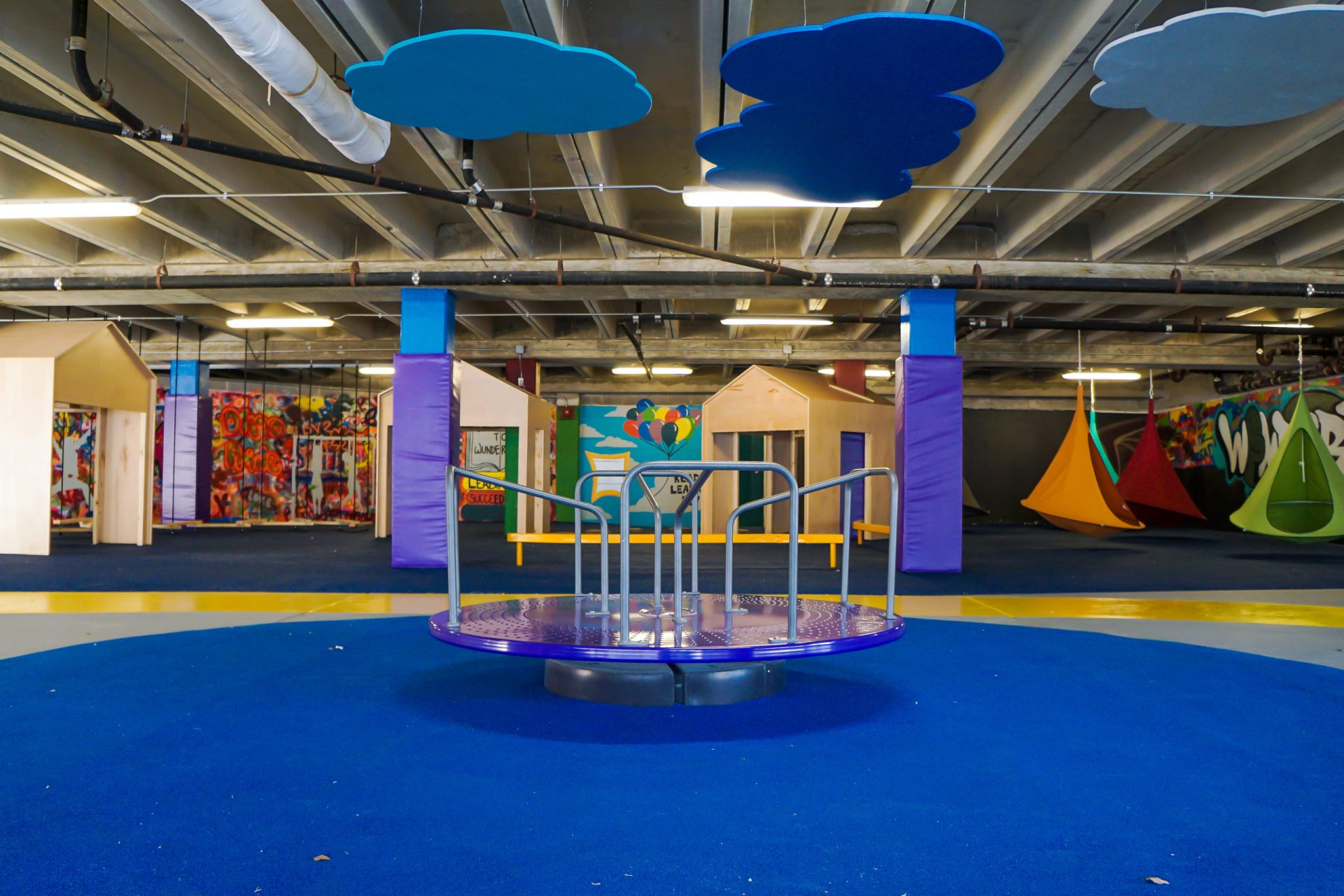
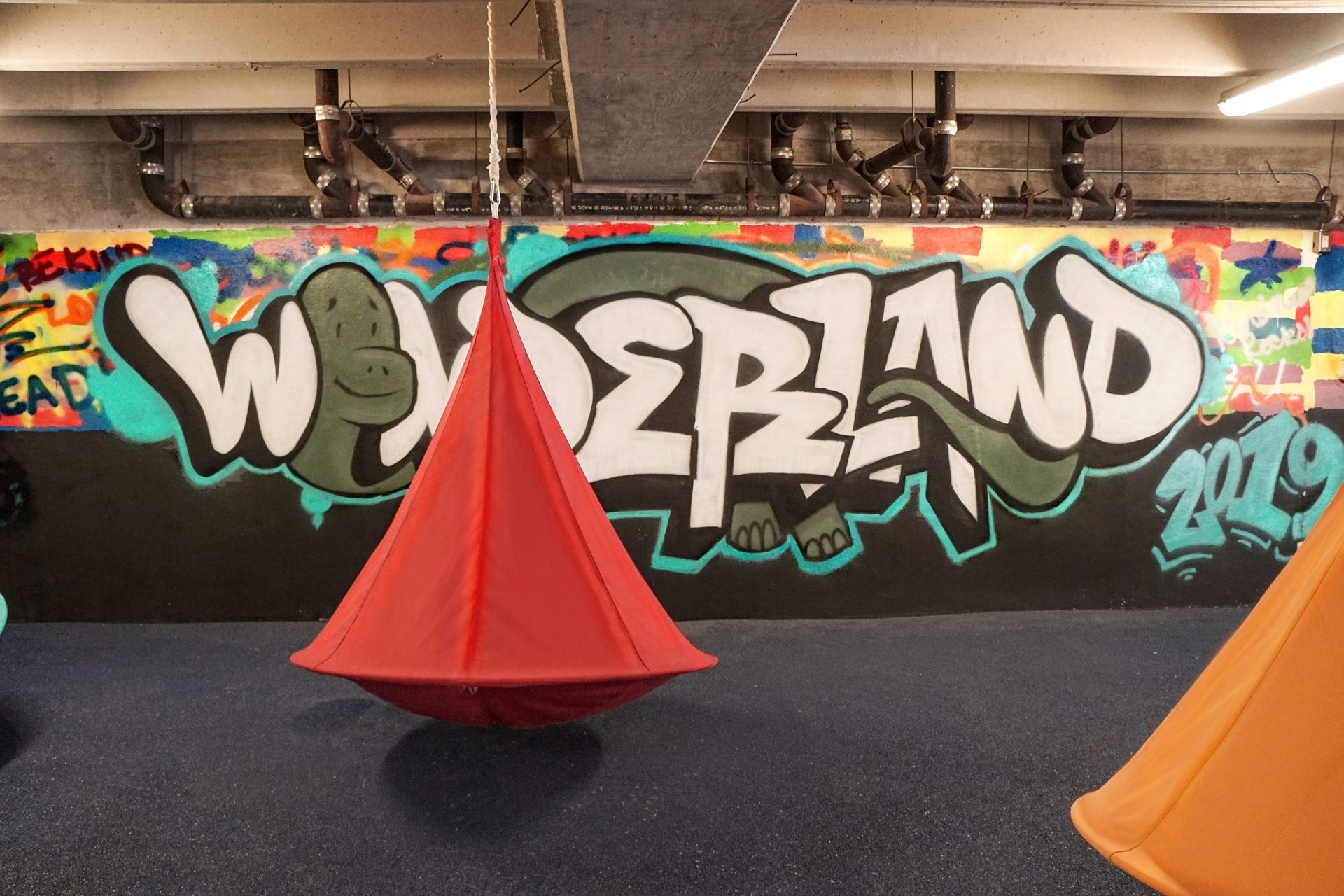
By rehabilitating – a dark, dank area under the school, (known to students as “The Dungeon”), Mussey, her teachers, and the design team created a genuinely unique activity-based learning environment that cultivates curiosity and gives students a place to practice reading, writing, collaboration, and communication skills.
Finding purpose for wasted spaces adds value to not only a school’s physical structure, but also immeasurable worth to the spirit of each campus. Both schools built community and created ownership through hard work and volunteerism.
